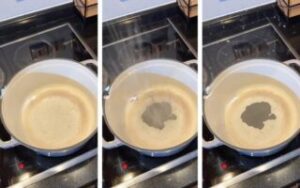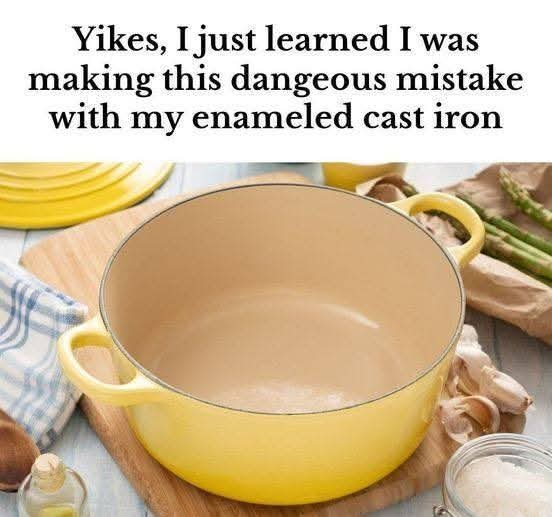Dutch ovens, such as Le Creuset or Lodge, are designed to last a lifetime—as long as you know how to care for them properly.
A high-quality Dutch oven is an invaluable tool in the kitchen. This enameled cast iron pot excels at conducting and retaining heat, making it perfect for various recipes, whether you’re cooking on the stovetop or in the oven. However, it’s essential to understand how to preheat enameled cast iron correctly, as demonstrated by one TikTok user who experienced a dramatic mishap when her Dutch oven apparently exploded on the stovetop.
What Is Enameled Cast Iron?
Le Creuset is perhaps the most renowned brand of enameled cast iron cookware, but other manufacturers, like Lodge, KitchenAid, and Staub, also produce these durable pots. Enameled cast iron is essentially an upgrade from traditional non-enameled cast iron, which requires regular seasoning to maintain its nonstick properties and prevent rust. The enamel coating prevents rust, eliminates the need for seasoning, and ensures the cookware can last for generations.
While the enamel coating offers numerous benefits, it’s important to protect it. Abrasive cooking tools or dish scrubbers can chip or scratch the surface. Additionally, exposing enameled cast iron to extreme temperature changes can lead to thermal shock, causing the pot to rupture. This is the potential explosion we want to avoid.
Can You Preheat Enameled Cast Iron?
Yes, you can definitely preheat enameled cast iron pans, but it’s vital to do it correctly. According to the Lodge website, there are two recommended methods for preheating an enameled pan. The first is to preheat it dry and empty in the oven, where the indirect heat circulates evenly around the Dutch oven. The second method involves preheating it on the stove with a small amount of water or oil covering the bottom of the pan. If you choose the latter, be cautious not to start with high heat; Lodge suggests beginning with low heat and gradually increasing it.
What Happens If You Preheat an Empty Dutch Oven?
In a TikTok video showcasing this kitchen disaster, the pan explodes because it was being preheated empty on the stovetop at high heat. Whether gas or electric, stovetop burners generate intense, localized heat that directly contacts the bottom of the Dutch oven, leading to thermal shock and damaging the cookware.
However, if there is liquid in the bottom of the pan, these explosive outcomes are less likely to occur, as the liquid helps distribute the heat more evenly. Starting with low heat and gradually increasing it also helps minimize the risk of thermal shock.
Thanks to this TikTok cooking mishap, many home cooks are now learning valuable lessons about the potential mistakes to avoid when using enameled cast iron cookware!
cookware!
